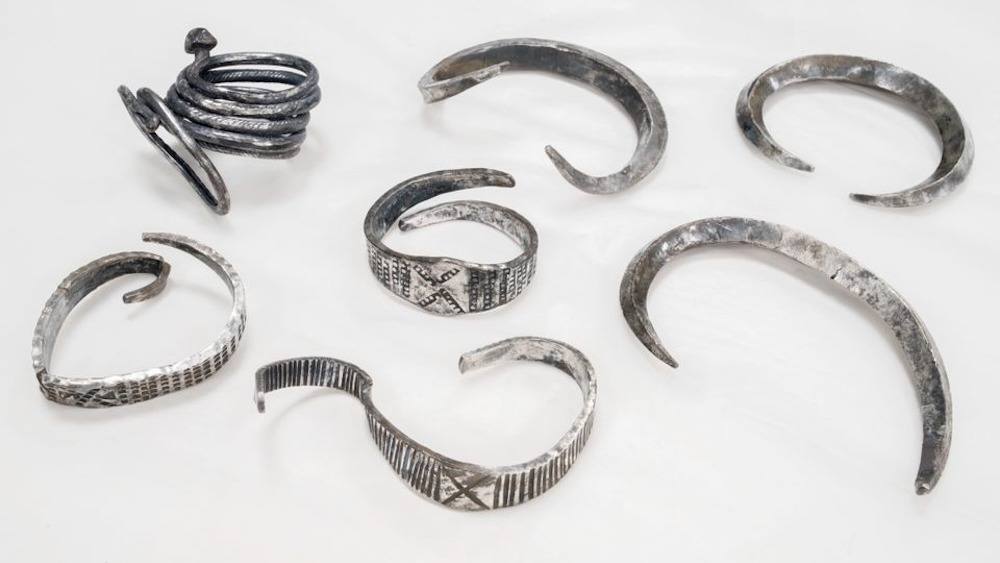
A college student in Denmark has unearthed a "spectacular silver treasure" of Viking Age jewelry that doubled as money.
Gustav Bruunsgaard, a metal detectorist and archaeology student at Aarhus University, was exploring farmland near Elsted, a town north of Aarhus, when his metal detector began beeping. Upon digging into the soil, he discovered a single silver bangle. A few days later, he returned to the field, which was the site of a Viking Age settlement, and dug up six more bracelets, according to a translated statement from Moesgaard Museum in Højbjerg.
Bruunsgaard alerted officials to the finding, and experts dated the items to the 800s, which would have been during the early Viking Age (A.D. 793 to 1066) in Scandinavia.
"The Elsted farm treasure is a fantastically interesting find from the Viking Age, which connects Aarhus with Russia and Ukraine in the east and the British Isles in the west," Kasper H. Andersen, a historian at the museum, said in the statement. "In this way, the find emphasizes how Aarhus was a central hub in the Viking world, which went all the way from the North Atlantic to Asia."
Related: What's the farthest place the Vikings reached?
The bracelets were a form of money known as hacksilver, an important form of currency during the Viking Age. At one time, the bracelets — which together weighed more than 1 pound (0.5 kilogram) — would have been "adapted to a common weight system" and were used "as a means of payment and transaction" while showcasing "the owner's financial ability," according to the statement.
The accessories were likely produced in Denmark. However, one "coiled ring" resembles a style of bracelets from either Russia or Ukraine and was "imitated in the Nordics." The three "band-shaped, stamped rings" inspired similar bangles in Ireland, "where they became very common."
The silver treasure is currently on display at the Moesgaard Museum.







